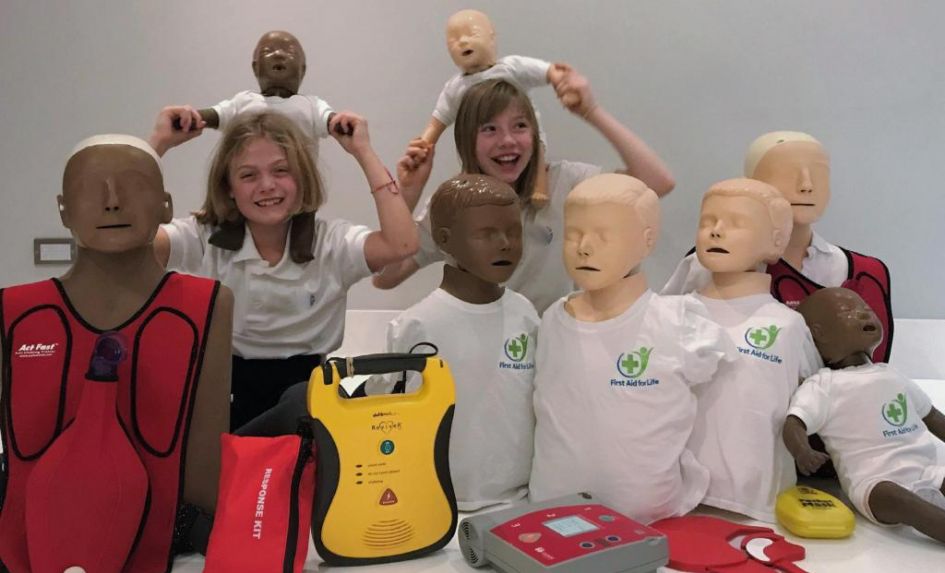First aid training encourages children to be self-reliant. It empowers them with invaluable skills for helping both themselves and others in medical emergencies, and they love the practical nature involved with learning it.
The government has now recognised just how important first aid is, hence their approval for it to be a mandatory element of the new PSHE curriculum.
Primary school children will be introduced to age-appropriate basic first aid, which will include learning how to call for an ambulance, and helping with common occurrences such as burns, choking, or putting someone who’s unconscious and breathing into the recovery position.
How should first aid be taught?
First aid is a complex specialist subject. Its concepts can be introduced to pupils by existing school staff, or external experts can be brought in, though both options will have cost and resource implications.
A common misconception is that first aid can be taught to large numbers simultaneously, such as in a school assembly. However, this runs the risk of children misunderstanding or misapplying first aid techniques – which could be potentially dangerous, if children who have only half-listened subsequently attempt to practise poorly-grasped skills on each other or younger siblings.
Ideally, practical first aid courses should be taught at an age-appropriate level to groups of up to 16 children. This way, trainers can ensure everyone is actively involved and has fully understood everything they’re learning. Any practical training should always be age appropriate and tailored to the requirements of the school, the needs of the pupils and, of course, the scope of your budget.
Professional organisations come armed with mannequins, defibrillators, choking aids, bandages and other teaching aids, to make the teaching a truly engaging, memorable and enjoyable experience. Providers such as First Aid for Life, St John Ambulance, the British Red Cross and the British Heart Foundation will all provide invaluable accompanying teaching resources to enhance the practical training pupils receive.
The online option
It’s also possible to equip larger groups of students with first aid skills via online modular pre-learning materials.
First Aid for Life offers a series of age-appropriate modular learning packages that enable students to learn such skills in school, alongside supporting resources for teachers. This can be followed up with hands-on training and Q&A sessions which are ideal for consolidating the knowledge previously learnt online.
When first aid is taught in a practical way, by first aid experts, children’s engagement levels soar. They love the hands-on nature of the subject and the opportunities to use those mannequins and master those defibrillators.
Emma Hammett is a registered general nurse and the founder/CEO of the first aid training provider First Aid for Life.










